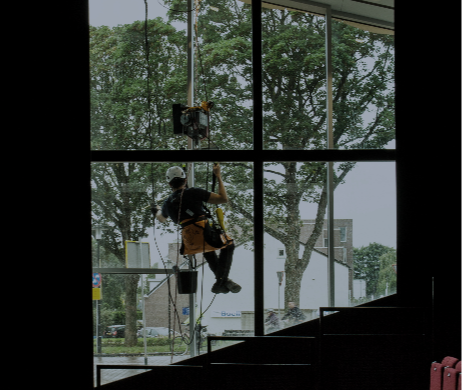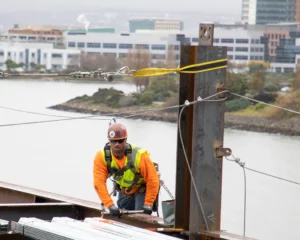The Philippines, an archipelago of over 7,000 islands, has long struggled with transportation challenges, particularly in its urban centers. Traffic congestion, limited public transportation options, and inefficient infrastructure are persistent issues, especially in Metro Manila. As the country continues to grow, addressing these challenges has become a top priority. One of the most promising solutions to improving connectivity and driving economic growth is the development of modern rail systems.
Rail systems, both urban and intercity, offer a transformative opportunity to alleviate congestion, improve access to jobs and services, and enhance overall quality of life. By focusing on building and expanding rail networks, the Philippines can unlock significant economic benefits and make transportation more sustainable for its rapidly growing population.
The Growing Need for Improved Connectivity in the Philippines
The need for better connectivity in the Philippines has never been more urgent. In Metro Manila alone, the daily traffic jams result in hours of lost productivity, high fuel consumption, and increased stress for commuters. The National Economic and Development Authority (NEDA) has repeatedly highlighted the critical role of efficient transportation networks in the country’s development goals.
Currently, the Philippines’ infrastructure struggles to keep up with the needs of its urban population. Roads are clogged, and public transportation remains unreliable and inadequate. The government’s ongoing efforts to address these issues focus heavily on expanding public transport options, with rail systems taking center stage due to their ability to move large numbers of people efficiently.
The Role of Rail Systems in Connecting Urban and Rural Areas
One of the primary benefits of rail systems is their ability to connect not only cities but also more remote rural areas to urban centers. This broader connectivity is key to fostering economic growth throughout the country. For instance, the North-South Commuter Railway (NSCR) project, currently under development, is set to link key provinces in Luzon with Metro Manila, providing a seamless and fast mode of transportation for both commuters and goods.
Moreover, rail systems create more equitable access to services, markets, and job opportunities. By enabling people to travel quickly between urban and rural regions, rail networks can reduce the economic disparities between metropolitan areas and their surrounding provinces. This contributes to balanced, sustainable regional development across the Philippines.
Economic Growth Through Enhanced Accessibility
Improved transportation networks directly fuel economic growth by making it easier to access jobs, markets, and resources. A reliable and fast rail system can reduce travel times significantly. For instance, the Metro Manila Subway project aims to cut travel time between key locations from over an hour to just 30 minutes, enabling workers to reach their jobs faster and more efficiently.
Furthermore, rail systems can boost industries like logistics, tourism, and real estate. Goods can be transported more quickly and at a lower cost, supporting industries reliant on timely delivery, such as e-commerce. Additionally, tourists will benefit from easier access to popular destinations, encouraging tourism growth and contributing to the national economy. Real estate developers are also keen on building near rail stations, knowing that convenient access to transportation can increase property values.
Rail Systems and Sustainability: A Green Approach to Development
As the world faces increasing environmental challenges, transportation systems are under pressure to reduce their carbon footprints. Rail systems provide an eco-friendly alternative to road transport, especially for long-distance travel. Trains are significantly more energy-efficient than cars and buses and produce fewer greenhouse gas emissions per passenger.
In the Philippines, where urban pollution is a major concern, adopting rail systems can improve air quality and reduce traffic-related emissions. As part of the government’s push for sustainable infrastructure, rail systems contribute to a greener, more resilient future. In addition, modern rail projects often incorporate energy-efficient technologies, such as solar-powered stations and electric trains, further minimizing their environmental impact.
The Future of Rail Systems in the Philippines: Key Projects and Investments
The future of rail systems in the Philippines looks bright, with several ambitious projects in the pipeline. The Metro Manila Subway, a long-awaited project, is expected to improve public transport in the capital by connecting major districts, easing congestion, and providing a reliable travel option for millions of commuters. Similarly, the PNR North-South Railway, connecting Metro Manila to regions like Calabarzon, aims to enhance regional integration and contribute to national economic growth.
These projects represent significant government investment and demonstrate a clear commitment to modernizing the country’s infrastructure. The growth of the rail sector is also expected to create thousands of jobs in construction, maintenance, and operations, benefiting local economies and providing employment opportunities for Filipinos across various sectors.
Overcoming Challenges: Funding, Land Acquisition, and Public Support
While the benefits of rail systems are clear, their successful implementation is not without challenges. One of the main hurdles is securing the necessary funding to finance large-scale rail projects. The Philippine government is turning to public-private partnerships (PPP) to ensure that projects like the Metro Manila Subway and NSCR are completed on time and within budget.
Land acquisition for rail corridors can also be a significant issue, particularly in densely populated areas. The government must work closely with local communities and stakeholders to ensure fair compensation and minimize disruption. Finally, public support is crucial for the success of these projects, and effective communication strategies are necessary to keep citizens informed and engaged throughout the process.
How Rail Systems Can Improve Quality of Life for Filipinos
Perhaps the most immediate benefit of rail systems is the improvement in quality of life for millions of Filipinos. Commuters will experience reduced travel times, greater convenience, and less stress, leading to improved overall well-being. The rail systems’ ability to alleviate road congestion will also reduce pollution, contributing to better air quality in cities.
Rail systems can also enhance access to healthcare, education, and other essential services by making travel easier for people from various parts of the country. Whether it’s getting to work on time or visiting family members across provinces, the introduction of more efficient rail systems will make life easier for Filipinos across all walks of life.
The Economic Ripple Effect: Spurring Growth Beyond Metro Areas
Rail systems don’t just benefit major cities like Metro Manila. They also have a ripple effect, stimulating local economies in nearby provinces. As rail networks expand, new opportunities for business development arise in less urbanized regions, creating jobs and boosting local economies. Developers will invest in commercial and residential properties near rail stations, further contributing to regional growth.
Additionally, industries such as agriculture and manufacturing can thrive thanks to improved logistics networks that connect rural areas to urban markets more efficiently.
Takeaway
Rail systems have the potential to transform the Philippines’ transportation landscape, driving economic growth and improving connectivity across the country. The integration of modern rail infrastructure will help reduce congestion, enhance access to services, promote regional development, and foster a more sustainable future. As the government continues to invest in these projects, the Philippines is poised to unlock the full benefits of a connected, efficient, and environmentally-friendly transportation network.
To ensure the success of these projects, it is crucial for the public and private sectors to collaborate, and for citizens to support these initiatives. With ongoing investment in rail infrastructure, the Philippines can look forward to a brighter, more prosperous future for all its people.




